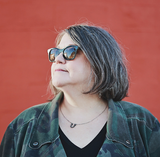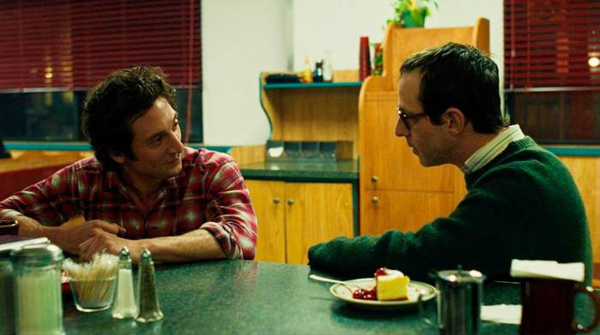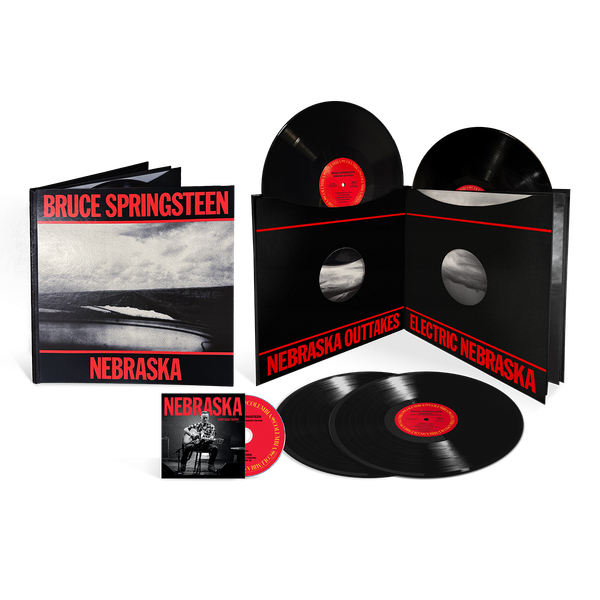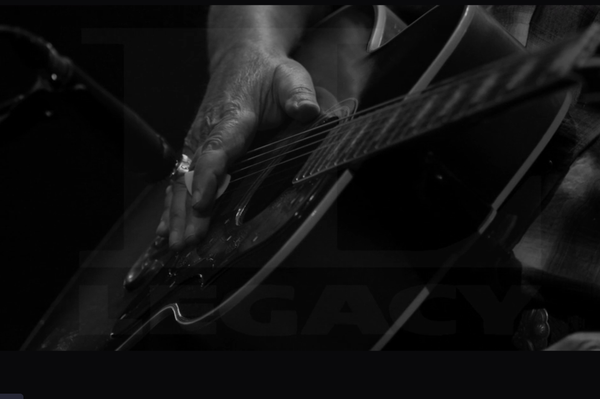Bruce Springsteen & the E Street Band, the Bottom Line, NY, NY, August 15, 1975
“Do you folks get down to the Shore much?”
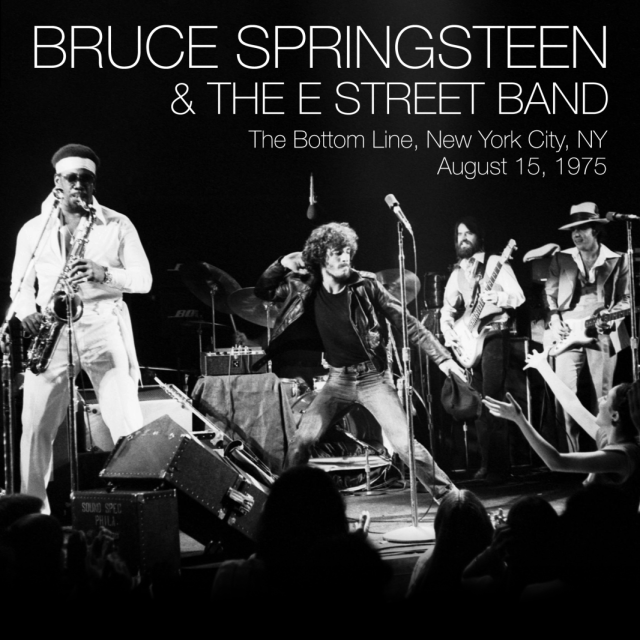
Setlist: TENTH AVENUE FREEZE-OUT / SPIRIT IN THE NIGHT / THEN SHE KISSED ME / GROWIN' UP / IT'S HARD TO BE A SAINT IN THE CITY / THE E STREET SHUFFLE / WHEN YOU WALK IN THE ROOM / SHE'S THE ONE / BORN TO RUN / THUNDER ROAD / KITTY'S BACK / ROSALITA (COME OUT TONIGHT) / 4TH OF JULY, ASBURY PARK (SANDY) / QUARTER TO THREE
Capacity: 400
Broadcast live by WNEW-FM
“Springsteen fashions the kind of seamless, 150-minute performance that most artists can only dream about, never realize. On my feet, clapping, never wanting it to end, I ask myself when I've ever been so moved by a concert.
"Four times: Dylan doing 'Like a Rolling Stone' anywhere in '65 or '66, the Rolling Stones at the Garden in '72, Jackson Browne in Toronto in '72, and a few of the New York Dolls' late shows at the Mercer Art Center that same year.”
Paul Nelson (RIP), "Is Springsteen Worth the Hype?" Village Voice, 8/25/75
“Ladies and gentlemen, the Bottom Line is proud to present: Bruce Springsteen & the E Street Band.”
You can hear someone say, “Clarence, what is it?” and I can’t tell if it’s Steve or it’s someone in the audience. But without further ado, as they say, Roy plays the opening notes to “Tenth Avenue” on the grand piano, you hear Steve’s glorious scratch guitar, Clarence slides in as Danny enters from the other side, and then: “One! two!” here’s Scooter, singing about the teardrops on the city.
This mix is somehow very kind to Roy Bittan, or maybe it’s that it’s kind to people who like to listen closely to what Roy is doing, because his melody lines are further up in the mix than they should be. Steve and Bruce singing the chorus together is absolutely perfect.
“This is for all the folks down by the Shore, at Greasy Lake…” And instead of the long, shape-shifting, scene-building instrumental intro, it’s tight, compact, straight into the action. You’ll think, oh, they’re doing this because it’s on the radio and 10 minutes of ambient instrumental isn’t going to play as well as it does onstage. But it’s probably more about trying to keep the show compact for the time slot and for the broadcast.
“It’s about a mile down the dark side of Route 88,” Bruce explains, almost conversationally, like he’s giving you directions. Max hits the cymbal crashes before the chorus with aplomb. Bruce will keep sliding back into the conversational cadence -- or it’s a nod to Bobby D., who we know is in the general area in this time frame, doing surprise appearances and putting together what will become Rolling Thunder.
You can hear the nerves and the tension if you’ve ever listened to just about any other show from 1975. Yes, Columbia bought a large number of tickets for the run to hand out to staff and other industry bigwigs, but tonight, this is live on a Friday night, out on the airwaves across the Tri-State area (as well as on a mirror down to Philly on WMMR), on WNEW, a radio station that absolutely, totally did not like Bruce Springsteen and as such, refused to play him on the radio and definitely engaged in some light dissing of the dude on the air. (You can read more about this.)
Well, this kid? Hazy Davy, he got… really. hurt.. He crawled into the lake in just his socks and…
You can hear the crowd giggling and if you’ve seen the pictures, you know he was face down on the stage, engaging with the tables at the front, and then, he’s decidedly off mic, wandering around somewhere. Later on, after “Saint in the City,” Richard Neer from WNEW will come on air to do a station ID but also to inform listeners that the reason Bruce was off mic was because his mic cord had gotten disconnected. Instead of making it sound like a fun and cool thing, here all they care about is that you know that it’s not the station’s fault that the vocals dropped off the broadcast. Part of this has to be because they know that every Bruce Springsteen fan in the tri-State area is going to blame the station and will make their displeasure known by calling the station.
This is the canonical version of “Then She Kissed Me” that circulated on bootlegs for decades. You will recognize the room echo! Once again, a shout-out to the arrangement (as previously discussed) - the guitar jangle is perfect and both the sax solo and the drums are accurate to the period and the producer even if they weren’t part of the original. The alterations were necessary to make this work for the E Street Band and the people who made the alterations (I see the heavy hand of Miami Steve in here) knew what they were doing.
The band finally settles into a groove when they get to “Saint in the City.” It’s their sweet spot, it’s a song they’ve been honing and building and developing since forever, it’s not new, there is a chance that people in the audience already know it and so they’ll get some actual energy feeding back. And it is a superlative version. It would have caught you by the ear if you were driving around or sitting at home, driving and full of energy.
You can hear the shift in the audience when it’s finished, as Max is hitting his stick on the rim of the snare, ready to cue “E Street Shuffle.” You hear Bruce just off mic saying something like, “What it is… you’ll know,” and then, another couple of beats and you know he’s cueing Roy. Danny drifts in from the other end, they get louder, then, there’s the guitar. It’s another oldie by Springsteen standards, and the nerves have definitely unwound a bit.
But now it’s story time, and probably the first time a gratuitous shout from the audience in response to an Asbury Park reference. “I was working in this bar down on the Shore, right, this place called the Student Prince.”
LOUD YELP
Based on Bruce’s reaction, he was not expecting anyone to know about anything in Asbury Park. So he continues.
Do you folks get down to the Shore much?”
loud cheering
“Well, you gotta go see Southside Johnny’s band. He’s got a band --
“The Jukes,” someone in the audience says.
“Yeah, the Jukes!” He seems amazed that someone knows.
This version of the “Shuffle” intro story is about how he and the band had paid their dues playing the Prince, and how they didn’t make any money (Steve recalls it being $13.75, split between seven band members). And Bruce is making Steve into the central figure of the story now.
“Steve was known, he’d practice his guitar day in and day out, night and day, all the time, every time I’d see him he would practice, practice, practice. You’d see him on the Boardwalk, he’s got his guitar with him, practice, practice, practice.” And now he’s mixing up the legends, the door at the Student Prince didn’t blow off its hinges but instead it was taken off by bikers, and Steve has his guitar as he and Bruce are walking home after the gig and that’s when they run into Clarence, all dressed in white. And it’s not just Bruce, but Bruce and Steve, ducking into the doorway, hoping the apparition in white passes them by.
“We were a little scared, we didn’t want to get messed around or nothing, I said, ‘That’s all I need, come home with $3.50 and a messed up face tonight!” The footsteps are coming closer and closer, illustrated by someone banging on a fretboard.
”Buit all he did was put out his hand, so me and Steve, man, we leaned back, and we got just a little closer, and then when we touched it was like…”
Sparks!
This is almost eight minutes of a very rambling story going out over the airwaves, and this is an extremely laid back version of “Shuffle,” which goes on for 20 minutes, as per usual. I am sure this went over well with many people involved behind the scenes, including the WNEW engineers. But there was no way Bruce Springsteen was going to change anything essential about his show just so it sounded good on the radio. (These days he might consider it. I’m thinking about the time I was in the audience for the Seeger Sessions Good Morning America taping.)
But by now, Bruce is so comfortable that he’s throwing a little harmony vocal in the first chorus. Clarence almost whispers “East Coast muscle.” Steve plays a solo that definitely originated in Memphis or Muscle Shoals. There’s terrible static/interference during the spoken word part (more on this later) where our hero slips on his jeans and moves on down to the scene..where, tonight, they’re havin’ a party, possibly a nod to the Southside mention earlier.
Rounding the Circuit, havin’ a party
Stopping off at Richie Sorrento’s #5 on Route 33, havin’ a party
Clarence’s sax solo at the end is lovely, as Bruce keeps chanting, “Havin’ a party/all by yourself…” and then changes it to “Havin’ a party/all by yourself, with the saxophone.” At the end, the audience is eating it up, so this is a prime example of how the energy of a live show doesn’t necessarily come through the recording.
“This is a song originally done by the Searchers,” and it’s that bright and beautiful version of “When You Walk In The Room,” which had its debut on opening night (allegedly). This rendition is another one that most Springsteen diehards know, because it’s the version that has shown up on bootleg after bootleg over the years.
The rushed, mumbled introduction to “She’s the One” makes me want to pull my hair out now, because it seems like self-sabotage. However, as we’ve heard in the adjacent shows from Providence and then Akron, this was not unusual. Hundreds of thousands of people are listening to this show and you would not know that this was a new song from the album that was going to be released at the end of the month. But we also have to keep in mind that it’s only been a couple of weeks since Landau was able to talk Bruce down off the ledge and get him to green light the record for release, which only happened at the beginning of the month! It is only August 15.
But this version of “She’s the One” makes you forget everything that happened before. It has power and presence, the Lost Boys singing their backing parts with vigor, and Clarence shakes those maracas for all that they’re worth. It is absolutely leading the pack of the new material.
“I wanna do this one for Bob and Dave…tramps like us.” They are still speeding through “Born to Run” but the underlying power is starting to shine through more and more as they become more confident in it and in their ability to perform it. You hear some jabroni in the back of the room doing his best to make his presence known as Bruce gets ready for the solo piano “Thunder Road.” It’s mostly unintelligible except for when Bruce asks him where he’s from.
If you’ve ever attended a Bruce Springsteen show in the great state of New Jersey in any decade, his answer will not surprise you. (And I say this as someone who was born in Paterson.) But this version of “Thunder Road” probably stopped traffic. Bruce’s voice swells gently with what feels like growing confidence as the song moves along. It is still rough, it is still embryonic, it is still early. But it is also still “Thunder Road.”
Next, Bruce tells a story about how he and Steve and Clarence went to a fortune teller. It’s going over great in the room but you just cannot hear it as well over the radio broadcast. The upshot is that despite saying that they were all down to find out about the future, Miami and the Big Man change their minds. “So we flipped a coin, you know, and Stevie said he didn't wanna, and all of a sudden Clarence didn't wanna either ... so they put it on the Boss, right? Being the Boss, you see, being the Boss, you got to have this leadership, you can’t let it show that you're scared and nervous!” The gypsy lady gazes into her crystal ball and faints. Steve and Clarence want to leave, but Bruce wants to get his 50 cents worth and takes a look himself. “Am I gonna be hit by a train?” No, what he saw, and what so upset the gypsy lady was…”Kitty’s Back.” The crowd yelps in approval at the mention of Kitty and then the band goes off on a joyride.
Unfortunately, this is also one of the more difficult sections of the tape. Let’s go to our friends from JEMS on this: “The show starts in stereo, but does eventually drift to basically mono and contains a lot of crazy channel dropouts and instrument level shifts. Why? Well it turns out that Mike Appel himself was manning the mixer that fed the broadcast that night, and his work, to be polite, is inconsistent. Parts of the show are mixed beautifully (e.g. ‘Then She Kissed Me’). Other parts seem to utilize only ambient room microphones and sound much more distant (e.g. ‘Kitty’s Back’). The latter song is a mess, with levels and mix changing wildly throughout the song and never really settling in a good place. But that's how it is on the broadcast, too.”
Of particular note is the solo section before the bridge, which is a duet between Bruce’s guitar and Clarence’s sax, before the rest of the band swings in. It isn’t a bad version of “Kitty’s Back” but it does feel like it’s lacking a little focus, which I’ll attribute to adrenaline and nerves, still.
YES! THAT IS CLARENCE CLEMONS ON THE SAXOPHONE!
The relief in Bruce’s voice in the introductions afterwards carries him straight into “Rosalita.” Everyone sounds far more relaxed than they did at the beginning of the night and it is absolutely a vintage 1975 Rosie being manifested on that stage at this particular moment. It is rocket fuel.
Wanna send this out to all the folks down on the Shore, in Asbury Park, Long Branch, West End, Sea Bright…
BRADLEY BEACH!
Bradley Beach, too…Say hi to your moms, you’re on the radio!
And with that, the Jersey Shore manifests itself on the corner of W. 4th Street and Mercer, with a gorgeous version of “Sandy.”
There’s a brief moment of chat and guitar tuning and then… “GET UP! GET UP!” It’s time for “Quarter to Three” and it is absolutely electric.
AM I IN NEW YORK?
YEAH!
AM I IN NEW YORK?
YEAH!!
AM I IN NEW YORK OR NOT??
Yes, Bruce, you absolutely are, and no one’s ever going to forget it.
THE TAPES
We don’t have tapes for every show on this Bottom Line stand. We don’t even have confirmed or complete setlists for five of the 10 shows: we have 8/13 late, 8/14 early, 8/15 early (this show!), 8/16 early and 8/17 early. Brucebase lists setlists for the 8/15 and 8/17 late shows, which are not documented but are instead based on “recollections by attendee,” which as an archivist makes me extremely nervous, because there’s no mention of methodology – did the person go home and write it down? The Bottom Line used to give out these programs, kind of like Playbills, and people often used to write the setlist down on the covers. Are these setlists coming from a similar type of artifact or are we relying on someone’s memory? If so, why do we believe their memories are correct?
Here is a helpful PDF that charts all of the known sets from this stand.
I think these setlists for the 8/15 and 8/17 late shows are questionable because they are somehow the longest and they are also almost identical, and there’s no indication as to why Brucebase thought these accounts were credible. I had considered launching some kind of effort via social media to try to find people who were at those shows and maybe there’s a tape we don’t know about, maybe someone wrote down the setlist for themselves and never thought it was important information. But that runs the risk of people coming forward with inaccurate memories from 50 years ago. We have what we have.
And despite the gaps, I don’t think we’re missing any critical information. From the shows we do have confirmed setlists or tapes, the structure of the shows were very consistent and didn’t change all that much. If there had been some kind of mindblowing, unexpected cover performed at one of these unknown performances, someone would have remembered it. There were diehards at these shows and word would have spread through the grapevine, and there were journalists there too who moonlighted as Bruce fans; they would have noticed.
TAPE QUALITY
This is covered in the readme for the show download, but it’s worth pulling out here. Our friends at JEMS make the point that due to its very origins as an FM broadcast, it’s one of the most bootlegged recordings of all time. But the FM broadcast was not great quality. “The Bottom Line broadcast used on every release is basically mono and filled with a host of frustrating noises and clicks.” There have been many attempts over the years to clean up the best recordings but that didn’t solve the essential problem, which was the source. Eventually they got ahold of the closest to a master tape that unofficial sources are ever likely to run into, the legendary pre-FM tapes, a safety copy created by the station. However, they still feature many of the technical problems you may be familiar with from other sources.
Listen or download thanks to the Internet Archive
"NOT SINCE Elton John's initial Troubadour appearances has an artist leapt so visibly and rapidly from cult fanaticism to mass acceptance as at Bruce Springsteen's ten Bottom Line shows. Hundreds of fans lined the Village streets outside the 450-seat club each night, hoping for a shot at 50 standing-room seats. It was a time to hail from New Jersey with pride."
Dave Marsh, Rolling Stone, Sept 25, 1975

